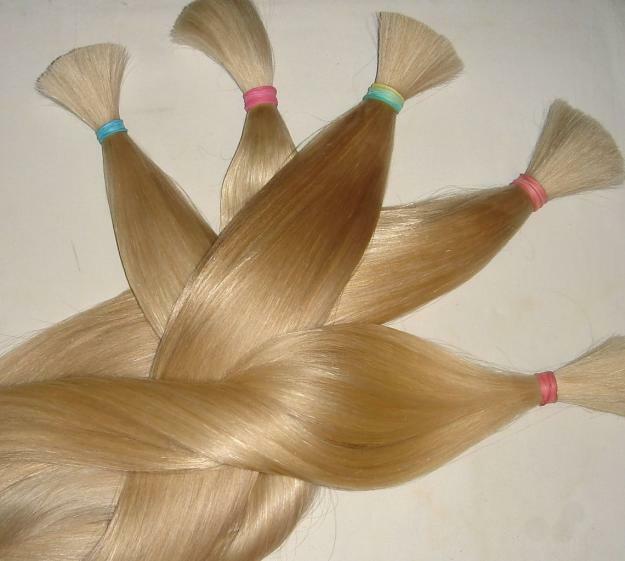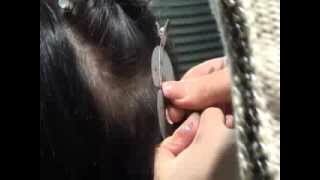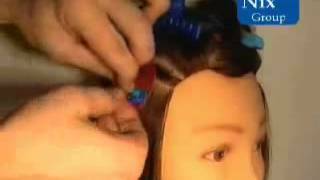Hair extension in Spanish technology allows each woman to become the owner of luxurious curls anylength and volume. Spanish hair extensions can create any image: straight streaming curls or cute playful curls. This method of hair extensions is more suitable for girls with blond hair, because the glue has a slightly whitish shade. Spanish technology is easy to perform, but a good result only gives the quality of materials( glue, false hair) and skilled work of the artist.
Features of Spanish hair extension technology
Spanish hair extensions are a cold technology, the emergence of which is the merit of Spanish hairdressers. They invented a special two-component adhesive Rueber, which reliably connects the donor curls with natural hair.

For the extension we use ready-made strands, formed from Slavic and European hair of high quality and fixed with glue. To soften the glue, the master applies a special activator on it and hands up very neat flat fasteners, which firmly connect natural and false strands. At the junction of the hair, a small flat capsule forms, it does not interfere with the combing process and does not cause discomfort during sleep.
Video of the Spanish hair extension technology
In the early days of socks overhead strands can be felt heaviness, but this is because of unaccustomed, soon it will pass. In the work the master uses from 150 to 200 donor strands. The procedure for Spanish hair extensions takes an average of 3.5 hours, and the result remains up to 4 months. After drying, the adhesive acquires a transparent white color and can be noticeable on dark hair, so a cold Spanish hair extension is more suitable for blond and fair-haired girls.
Correction of accreted hair
After 3-4 months after the build-up, there is a need for correction. First, the glue contains keratin, which eventually begins to break down: the grown strands are not only combed out, but they can fall away. Secondly, the native hair grows, the capsules that have dropped down look ugly and require a "transplant".
The correction takes much longer than the original procedure. To soften the capsules, the master treats them with a special solvent, then removes the overhead curls, combs the customer's hair from the glue residues, tidies the removed strands and re-increases them. Correction, while it takes more time, but is cheaper, because the strands are used the same as the first build.
Advantages of Spanish hair extensions
- Hair is not exposed to high temperatures and special devices, so it remains healthy;
- The adhesive is similar in structure to natural keratin, from which human hair is built, so it does not cause allergies;
- Accreted hair can be toned, dyed, straightened, and for the care of them you can use any shampoo, mask and balm;
- Capsules provide reliability of fastenings of natural and false curls, thanks to which the hair is not combed;
- Accreted strands with proper care are worn for up to 4 months;
- Artificial curls are removed easily and painlessly;
- The length can be increased to 70 cm;
- Donor locks can be used for corrections many times;
- The prices for cold methods are traditionally lower than for hot methods of expansion;
Cons of Spanish hair extension
- For all practicality of this hair extension technology, it has one large minus - with attached hair to the glue you should not go to the bath or sauna, and also, when swimming in the sea, you will have to protect your hair from getting wet;
- The build-up process is a complicated and painstaking work;
- Correction is an even more time-consuming and time-consuming procedure;
- Spanish technology is not suitable for short haircuts. The minimum hair length at which you can make a build-up is 10 cm.
- With improper care and untimely correction, glue capsules can damage your hair when removed. Much, of course, depends on the work of the master.
- Hair extension in Spanish technology is not suitable for brunettes.
Contraindications to the use of the Spanish hair extension technology
Spanish hair extension is not recommended for hair loss, hypersensitivity and scalp diseases, vegetative-vascular dystonia, long-term use of potent antibiotics, hormonal drugs and the course of chemotherapy.
Video:
 0:44
0:44  0:41
0:41  4:37
4:37 